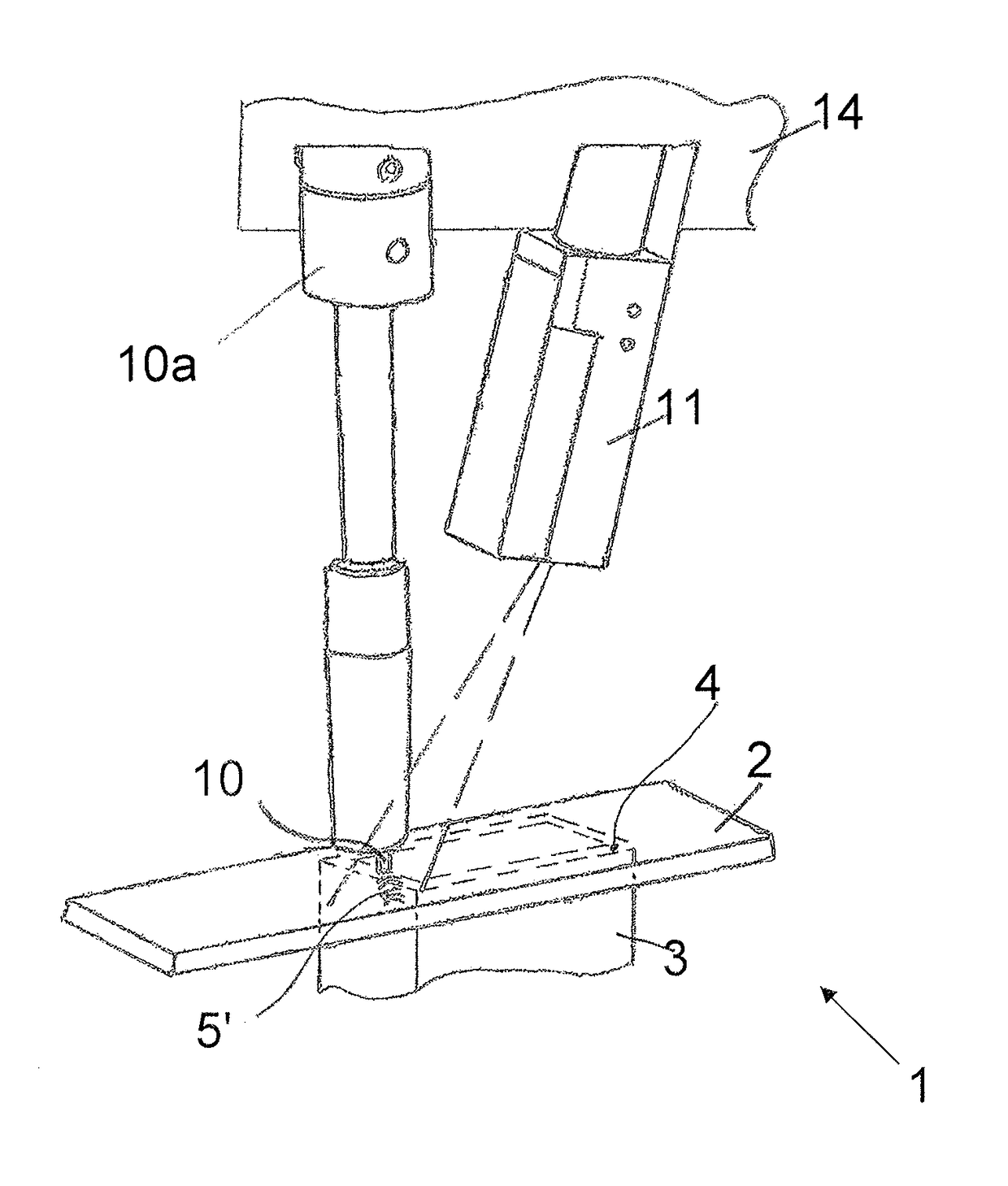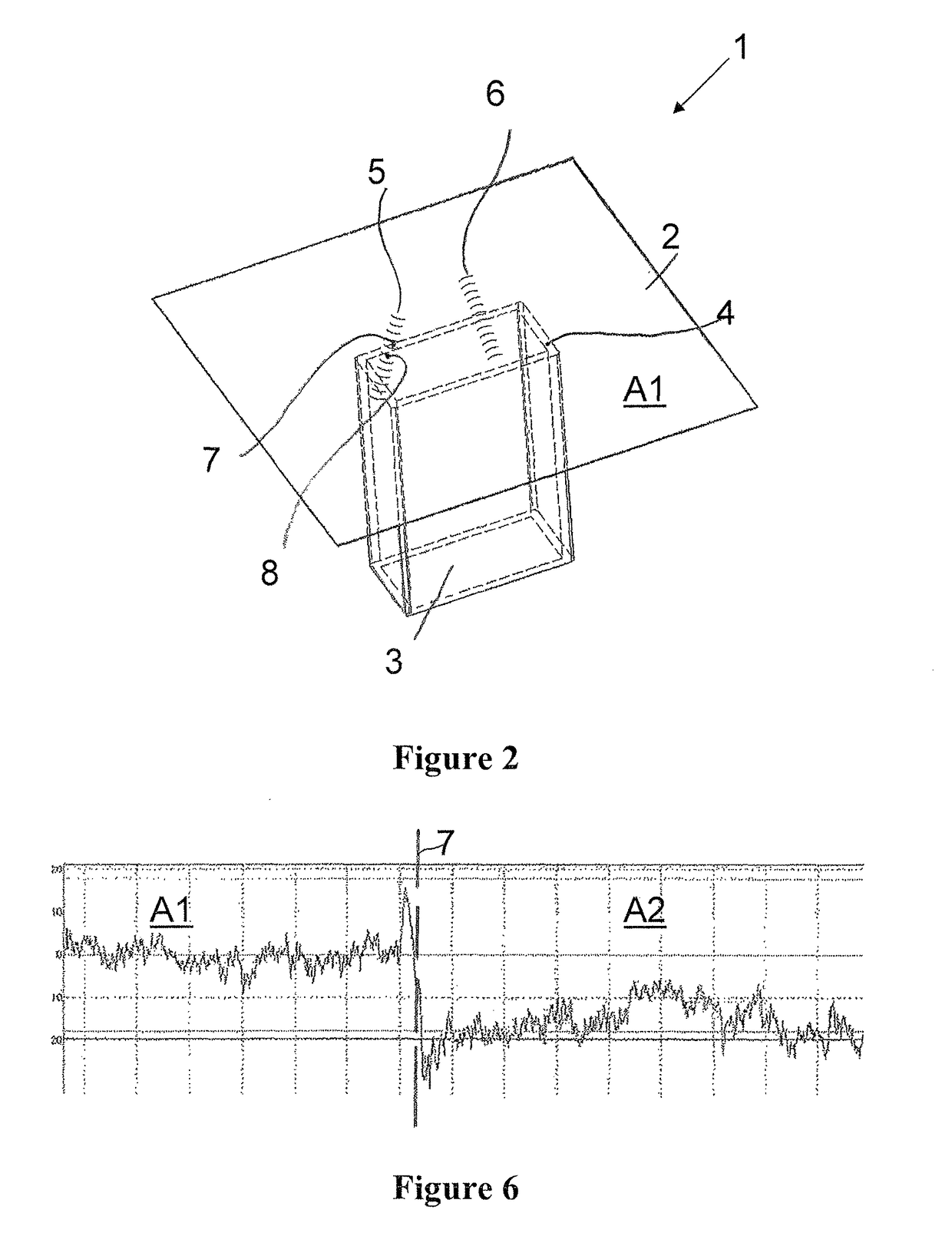Joining a workpiece in a concealed joining seam
a technology of concealed joining seam and workpiece, which is applied in the direction of instrumentation, programme control, auxiliary welding devices, etc., can solve the problems of increasing costs, prolonging cycle time in production lines, and adding additional process steps
- Summary
- Abstract
- Description
- Claims
- Application Information
AI Technical Summary
Benefits of technology
Problems solved by technology
Method used
Image
Examples
Embodiment Construction
[0054]FIG. 1 shows a workpiece 1 consisting of an upper workpiece part 2 and a lower workpiece part 3. The upper workpiece part 2 lies on the lower workpiece part 3, such that an energy beam 10 shown in FIG. 4 cannot directly process the joining contour 4 along which the upper workpiece part 2 contacts the lower workpiece part 3.
[0055]In order to be able to determine an exact position of the lower workpiece part 3 relative to the upper workpiece part 2, two exploratory seams 5, 6 have been produced—in the example embodiment, by means of the energy beam 10—on an upper side 2a of the upper workpiece part 2 which faces the energy beam 10.
[0056]Since the approximate position of the lower workpiece part 3 relative to the upper workpiece part 2 is known with regard to general joining tolerances, the energy beam 10 can place the beginning of the exploratory seam 5; 6 on the upper side 2a of the upper workpiece part 2 in an area which already lies near the joining contour 4, wherein the exp...
PUM
| Property | Measurement | Unit |
|---|---|---|
| energy | aaaaa | aaaaa |
| surface area | aaaaa | aaaaa |
| temperature | aaaaa | aaaaa |
Abstract
Description
Claims
Application Information
 Login to View More
Login to View More - R&D
- Intellectual Property
- Life Sciences
- Materials
- Tech Scout
- Unparalleled Data Quality
- Higher Quality Content
- 60% Fewer Hallucinations
Browse by: Latest US Patents, China's latest patents, Technical Efficacy Thesaurus, Application Domain, Technology Topic, Popular Technical Reports.
© 2025 PatSnap. All rights reserved.Legal|Privacy policy|Modern Slavery Act Transparency Statement|Sitemap|About US| Contact US: help@patsnap.com



